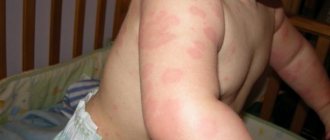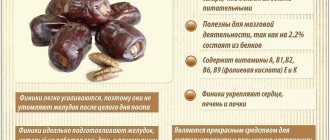Green or yellow stool with mucus: 3 important points
Green stool in children under one year of age is considered a physiological norm. A dairy diet gives exactly this color to stool. In addition, the rapid passage and digestion of food results in green stool (the greener it is, the faster the food is digested). If my baby has green stool with mucus, should I be worried?
- Make sure it's not diarrhea. Diarrhea is often accompanied by green stool, foam and mucus. To these symptoms there are a number of other striking signs: restlessness of the baby, refusal to eat, weight loss, increased frequency of stools, sudden bowel movements with popping sounds and release of gas, vomiting, high fever.
- Green mucus in baby's stool. May indicate irritation of the large intestine. Nothing wrong with that. If the baby feels well and is gaining weight normally, enzyme therapy or treatment for dysbiosis is not needed. Some modern pediatricians believe that these prescriptions do not make sense. Abroad, it is generally not customary to prescribe any beneficial bacteria to children under two years of age: it is believed that they are not absorbed in the intestines and pass through in transit. With a bacterial infection, the green mucus acquires a foul odor, the baby loses appetite, may have a fever, and vomiting. But these are serious reasons to seek medical help.
- Yellow stool with mucus in an infant. For a child under one year old, yellow stool and its different shades are considered normal. This is especially true for artificially-trained children. If the baby is transferred to another formula, a color change towards yellowness is also observed. A small amount of mucus if the child is feeling well should not bother parents. If there is a lot of mucus, the baby behaves restlessly, does not gain weight well, these symptoms cannot be ignored.
If your child has green diarrhea with mucus, you should immediately consult a doctor. The danger of diarrhea in infancy is rapid dehydration of the body, which can be life-threatening.
A child's stool with mucus should not alarm parents. The condition of the baby who exhibits this symptom should be alarming. The most important indicators of health for children in the first year of life are weight gain, good sleep and showing interest in the world around them. If your baby is enjoying life, you shouldn’t be sad because of the mucus in his stool.
Support the project - share the link, thank you!
What diseases provoke excess mucus in the stool?
Some diseases and abnormal development lead to the secretion of mucus by the mucous membranes of the intestines. First of all, excessive mucus production occurs:
- For irritable bowel syndrome: This is a hereditary disease that causes specific symptoms - abdominal pain, diarrhea and excessive production of light-colored mucus. Patients with irritable bowel syndrome (IBS) always pass a lot of mucus in their stool. This problem is more typical for older children.
- Intussusception is a condition in which part of the intestine penetrates into the lower part of the intestine, forming a ring blockage along the intestine. Often this problem can be found in children aged 5 to 9 months. Intussusception may cause the baby to pass mucous, bloody stool that resembles jelly.
- Ulcerative colitis is a chronic inflammatory process in the colon. Symptoms include bowel irritation, pain, and mucus-filled stools. Ulcerative colitis is one of many inflammatory bowel diseases that most often develops in children.
- Cystic fibrosis is a genetic disease that causes the body to produce large amounts of thick, sticky mucus that is difficult to clear. This leads to the accumulation of excess mucus in the lungs and organs of the digestive system. It is dangerous because it creates a risk of infection and secondary complications.
Causes
Mucus in a baby's stool, including blood, indicates a violation of the diet and various diseases. The causes of excessive mucus production are:
- runny nose. With a viral infection accompanied by a runny nose, a small amount of mucus is swallowed, enters the intestines and is thrown out along with the poop;
- diet. Increasing the intervals between feedings and large portions can lead to fermentation of food in the intestines and the formation of mucus;
- applying to one breast. The baby needs to suck milk completely from the breast, that is, both front and back. Feeding only foremilk does not cause saturation. In addition, it does not receive a very important enzyme - lactose, due to which dairy foods are digested;
- improper introduction of complementary foods. Complementary feeding is recommended for children older than 6 months. But you don’t need to start with fruit and vegetable purees, as well as freshly squeezed juices. These products, even in small volumes, provoke the fermentation process in the intestines;
- poor mother's diet. The consumption of gas-forming products causes flatulence, colic and intestinal irritation in the child. As a result, the baby develops mucous stool;
- atopic dermatitis. The disease is characterized by irritation, redness and peeling of the skin, the presence of mucus in the poop;
- reaction to drugs. Of course, a nursing mother is allowed to take medications only after consultation with a doctor. In any case, it is recommended to avoid them if possible during this period. If colic occurs, the child is given a product based on simethicone, which helps reduce gas formation. This is why mucus can form in the stool. Upon completion of drug therapy, the reaction will disappear;
- obstruction in the intestines. Intestinal obstruction occurs due to compression of the intestine. The child feels severe pain in the tummy, the stool becomes watery, including mucus and blood. In this case, the child needs to be hospitalized;
- intestinal diseases (dysentery, salmonellosis and others). In newborns, the course of the disease is accompanied by diarrhea and the formation of mucus in the stool, an increase in body temperature, vomiting, loss of appetite and rapid dehydration. If you notice the first signs of an intestinal infection, consult a doctor immediately. In case of severe illness, the child must be hospitalized;
- gluten deficiency. Due to a deficiency of a certain enzyme in the body, food containing a lot of gluten ceases to be digested. In most cases, such a reaction occurs as a result of the introduction of complementary foods. All products containing gluten (wheat, semolina and barley cereals, pasta, bread, etc.) should be removed from the child’s diet;
- lactase deficiency. The child needs the lactase enzyme for milk to be fermented in the intestines, or more precisely, the lactose enzyme found in it. Deficiency can be congenital or resulting from the appearance of a large number of pathogenic bacteria. As a result, the milk is not digested, causing pain in the tummy, gas, diarrhea and lumps of milk with elements of mucus. In this case, it is recommended to give lactose-containing drugs to breastfed children, and lactose-free formula to children on artificial nutrition;
- dysbiosis. The most common cause of bowel dysfunction in newborns. Pathogenic bacteria begin to multiply and dominate beneficial ones. As a result, the intestinal microflora undergoes changes - stool disorder occurs. Mild dysbacteriosis is accompanied by colic, constipation, bloating and mucus in the poop. With significant disturbances in the functioning of the intestines, a lot of mucus with blood streaks and remnants of undigested milk is formed in the stool. Many doctors do not recommend interfering with the process, since the intestines need to independently cope with the pathology and restore beneficial microflora. Intervention in the natural process can “pamper” the intestines and will not allow it to form immunity.
Causes and principles of treatment of diarrhea with mucus in an infant
When a baby appears in the family, all the parents' attention is focused on him. A wise mother will pay special attention to the color and nature of feces, because in a newborn age this is an important indicator of the body’s functioning. For what reasons can a baby develop diarrhea with mucus? How to properly help a baby?
Normal for babies
Diarrhea can occur in any child or adult. The consistency and color of stool changes depending on age. An infant's stool is usually yellow.
The presence of a small amount of mucus in the stool is accepted as normal. If this phenomenon occurs frequently and there is a lot of mucus, irritation is probably occurring in the intestines.
It is worth noting that diarrhea with mucous inclusions occurs both in babies with artificial feeding and with breastfeeding.
What triggers the development of mucous diarrhea?
If yellow diarrhea with mucus appears, this is not always a reason to do something right away. This phenomenon is not a disease in itself, but only a symptom that should be paid attention to.
The reasons that cause the development of mucous diarrhea are as follows:
- errors in nutrition;
- improper introduction of complementary foods;
- cold;
- use of certain medications;
- improper attachment to the breast;
- emotional overexcitation;
- improper diet of a nursing woman;
- infection with acute intestinal infections;
- dysbiosis.
It is worth considering in more detail each reason for the development of mucous diarrhea.
Diarrhea caused by poor diet
When breastfeeding, such problems arise only in the absence of a clear diet. Bowel irritation can occur if there is too much or too little time between meals.
Overfeeding leads to slower digestion, fermentation and mucous diarrhea.
When parents resort to using nutritional formulas, the baby may develop an allergic reaction to the inappropriate composition. If unpleasant symptoms appear, the mixture must be replaced.
Incorrect introduction of complementary foods
Complementary feeding should be introduced no earlier than six months of age. If you have a reaction to any product, you should cancel this dish for a while.
You cannot start introducing complementary foods with fruit or vegetable purees, as well as juices.
Colds
If a newborn has a cold, it is most likely that there is snot. Spontaneous ingestion of mucus from the nasopharynx leads to the appearance of minor mucous inclusions in the stool. In this case, you should not look for how to treat the intestines, but it is better to help the child get rid of a cold.
Medicines as a cause of mucus
Medicines are rarely given to newborns, although this is not uncommon for colic. More often, a baby’s intestinal reaction is provoked by medications contained in a woman’s milk. Therefore, nursing mothers should always carefully examine whether the drug they are taking will affect the digestion of their baby.
Incorrect attachment to the breast
You should not often transfer the baby from one breast to the other. As a result, the baby does not have time to select milk from the posterior chamber. It is the most nutritious. Without it, saturation will not occur, and the baby will not receive the most important enzyme - lactase. Green diarrhea with mucus often appears due to improper breastfeeding.
Emotional overexcitation of the baby
Contrary to the belief that newborn babies are incapable of being “nervous,” young children actually experience strong emotions. The arrival of guests, domestic conflicts and a change of place of residence can greatly affect the child’s nervous system. In some infants, this provokes the development of diarrhea and often contains mucus.
We recommend: Causes of diarrhea in a 3-year-old child and treatment methods
Effect of maternal diet
A woman’s diet directly affects the quality and composition of milk. Therefore, many children feel any changes.
A woman should be careful with the following products:
- fresh vegetables and fruits;
- juices and nectars;
- milk.
Mom should carefully monitor the reaction of her baby's intestines. It is advisable to keep a diary. This way you can keep track of what kind of reaction you have to certain foods and adjust your own diet.
Penetration of intestinal infections
The development of infectious diseases can occur in both infants and older children. Diarrhea is caused by the penetration of bacteria, germs, fungi and viruses. Among the most common infections are salmonella, rotavirus, and dysentery.
What to do if unpleasant symptoms develop? It is important to take the baby to specialists as soon as possible. Newborn babies do not tolerate such diseases well. The baby is at risk of rapid dehydration, which negatively affects all life processes. Sometimes the child may be hospitalized. This measure cannot be abandoned.
Intestinal dysbiosis
Mucous diarrhea can appear due to intestinal dysbiosis. Often its development occurs due to the use of antibiotics when infected with certain bacteria.
In newborns, it is better not to treat dysbiosis, but simply to maintain the child’s well-being. This is necessary to “train” the intestines to independently develop immunity and recognize pathogenic and beneficial microflora.
Other causes of mucous diarrhea
An unpleasant condition in newborn babies can be caused by a change in climatic conditions. If parents are traveling with a child, do not be surprised by changes in stool, because this is a natural reaction to changing circumstances.
Mucous diarrhea and fever may develop during teething. In this case, any medical assistance is most often not required.
If a woman is breastfeeding, unusual stool patterns may occur due to non-pregnancy of the mother's milk.
When diagnosing a baby’s condition, it is important to exclude the presence of such serious diseases:
- gluten intolerance;
- enterocolitis;
- gastroenteritis;
- lactase deficiency.
How to get rid of mucus inclusions
Before prescribing adequate treatment, the causes of mucus are determined in the laboratory. If it is not possible to visit a doctor, relatives can offer the baby to drink Smecta. For a baby in the first month of life, one sachet is diluted with water and consumed in small portions throughout the day.
The course lasts a week, but it is important to visit a doctor and undergo the necessary examination by a pediatrician or prescribe other remedies
Healthy children should undergo tests at least once every six months for control. With the help of mucus of a characteristic color, an experienced doctor suggests a diagnosis. If there is still pain, colic or vomiting with altered stool, hospitalization is required.
With altered microflora, the intestinal lining is restored by bifidobacteria and lactobacilli - special preparations or fermented milk products. After completing a course of antibiotic therapy, beneficial bacteria are prescribed.
Causes of mucus in baby's stool
Stool with mucus in an infant can be caused by the slightest deviations in the diet of a breastfeeding mother. A bottle-fed baby reacts to an increase in the amount of complementary foods, which is manifested in the appearance of mucus. In addition to the most common reasons, changes in the consistency of stool and the amount of mucous discharge can be caused by the following factors:
Green stool with mucus
For a child's body, green stool is considered normal if the smell remains sour and the consistency is natural. This color indicates that the mother ate a lot of vegetables or herbs the day before. If, with this color, mucus is detected in the baby’s stool and an unpleasant odor or foam appears, a disease is possible. Only a specialized doctor can accurately diagnose the disease in a baby after studying the test results.
Loose stools with mucus
The presence of dysbacteriosis is indicated by loose stools with mucus that have a normal color and odor. If you experience diarrhea for several days, and it continues after adjusting the nursing mother’s diet or reducing the introduction of complementary foods, you need to contact your pediatrician and get tested. Self-medication of dysbacteriosis without the supervision of a doctor can lead to allergies due to the fact that a child’s immature body is not yet able to absorb certain medications.
Pink slime
The presence of blood in a baby's stool turns the mucus pink or red. Such symptoms indicate serious disturbances in the functioning of the baby’s intestines - this is a warning about a dangerous intestinal disease. If you notice pink spotting, you should immediately contact your pediatrician to avoid deterioration of the baby’s health. Associated signs of pathology are:
- loose stools;
- vomit;
- sharp pain during feeding or defecation;
- temperature increase;
- foamy discharge.
Brown slime
If the mucus in a baby's stool is dark brown, this indicates an admixture of blood. This phenomenon occurs with frequent constipation caused by an unbalanced diet. A nursing mother should change the list of foods she consumes and reduce the amount of carbohydrates in order to normalize the number of normal bacteria in the baby’s tummy. Sometimes defecation is accompanied by the release of brown clots due to an infectious or cold disease, which provokes an increase in the number of white blood cells.
Transparent slime
If clear, watery discharge appears in the baby’s stool, but the smell has not changed, this means that the load on the baby’s intestines has increased. Feces that have a watery consistency indicate a change in the nutrients supplied by the milk. A similar phenomenon can be observed if the child is switched to complementary feeding, and digestive enzymes cannot cope with the new diet. Transparent mucus disappears after the quality of breast milk improves or the amount of complementary feeding formula decreases.
The constant presence of clear mucous discharge along with diarrhea signals a violation of the infant's intestinal microflora. It can be caused by a violation of the feeding regime, an allergy to artificial nutrition, or improper attachment to the breast. Despite the unpleasantness of such a process, with its help the child’s natural immunity is formed and the body is “trained” to independently maintain the balance of beneficial bacteria.
Yellow stool with mucus
Ocher-yellow stool with a liquid consistency (as in the photo) indicates an infection has entered the body. If at the same time mucous formations of a yellow tint are released, this indicates an existing viral intestinal infection, which leads to disruption of the beneficial intestinal microflora and is accompanied by the following symptoms:
- thirst;
- dry skin;
- increased heartbeat;
- colic.
White slime
If, after the baby poops, there are streaks of white mucus in his stool, or white lumps are observed, you should immediately contact your pediatrician, because such a phenomenon may indicate a threat to the baby’s body. The danger is especially great if there are admixtures of fat and blood. The cause of the appearance of whitish spots can be either infection with parasites (as indicated by loose stools and colic), or the formation of polyps or other pathological neoplasms (often accompanied by hard feces and constipation).
Causes of appearance in newborns, infants and older
Age characteristics and the nature of mucus in children's feces are interrelated.
It is believed that in young children the presence of foreign impurities in the stool is not a pathology, but the norm. Older children should not have mucus.
In newborns, the presence of mucous masses in the stool is common. Causes:
- immature intestines;
- weak activity of the pancreas;
- unsuitable formula for feeding;
- violation of the mother's diet while breastfeeding.
Mucus in the stool of a one-year-old and one-and-a-half-year-old child occurs against the background of the development of food intolerance, ill-conceived complementary feeding, and the rapid introduction of adult food into the diet.
Dysbacteriosis, intestinal infections, diseases (celiac disease, cystic fibrosis) provoke the appearance of pathological impurities.
For children over 2 years old, the appearance of mucous impurities in the stool is not uncommon. Causes: chronic constipation, proctitis, unhealthy diet, polyvalent food allergies, immature enzymatic system.
In a child over 2 years old, the regular presence of mucous impurities should alert parents . Seeing a doctor will help determine the cause.
Treatment of disorders associated with mucus production
Treatment regimens vary and depend on the specific disease. Treatment is aimed at eliminating the factor that caused the formation of mucous discharge.
If the cause of the disorder is respiratory, the doctor prescribes antiviral drugs, nasal drops, solutions or lozenges for the throat.
Treatment of mucous discharge is carried out only under the supervision of a doctor.
For dysbiosis, therapy with intestinal antimicrobial agents and special drugs belonging to the class of probiotics is indicated. In case of infection, antibiotics or antiviral drugs are prescribed.
If the disorder is caused by yeast fungi - thrush, then antifungal agents are used.
In case of erotic lesions, the doctor prescribes regenerative agents and drugs that eliminate pain.
How much does a month old baby poop?
All young mothers are prone to worry that something might happen to their baby, so the slightest change in the child’s behavior gives cause for panic. Most of all, mothers are worried about questions about whether the baby has enough milk, whether he is hot or cold, how much a month-old baby poops, and stuff like that. In general, the problem with a child’s stool is very acute for every mother, because it tends to constantly change. Either the baby poops up to 10 times a day, or does not go to the toilet for several days.
How can we understand what the norm should be?
All children are individual, so the concept of a norm, in principle, is absent
It is important to monitor the child’s condition; if nothing bothers him, he has a good appetite, a soft tummy and a calm mood, then all worries should be put aside. Also, the type and frequency of stool is influenced by the type of feeding
If the baby is fully breastfed, then he can go to the toilet from 1 to 7 times a day.
In most cases, the stool has a uniform consistency, can be either liquid or mushy, but in no case is it hard. It is necessary to ensure that there are no lumps, mucus, or blood in the child’s discharge, as this may indicate many diseases and if they are detected, you should consult a doctor.
There are also situations when a breastfed baby poops once every few days; this is not considered a deviation, but may be due to complete absorption of mother’s milk. If bowel movements bring discomfort to the child, he often cries and also strains, but to no avail, then, most likely, the child is constipated. To cope with this problem, you first need to adjust the mother’s diet and include laxative foods in the diet. You can resort to using an enema, but it is worth remembering that the volume of water for a month-old baby should not exceed 30 ml and the temperature of the liquid should be room temperature. This procedure should not be performed very often, as this can only aggravate the problem of constipation.
Massaging the intestinal area clockwise and placing it on the tummy helps a lot to prevent constipation. Under no circumstances take the advice of grandmothers, and do not mock your child by inserting pieces of soap into his rectum, as this can negatively affect the intestinal microflora. You should also not use medications to loosen stools without the advice of a doctor, since they have the unpleasant property of bloating the tummy, and the child does not need another problem.
Also, mothers often mistake frequent liquid bowel movements for diarrhea, but this is not always correct. As already mentioned, the baby can easily poop up to 7 times; if he did this more often, try to remember if you tried a new product the other day; perhaps further eliminating it from the diet will help improve bowel movements. If the diarrhea does not stop, and you notice any impurities in the stool, or it foams and has an unpleasant pungent odor, and the color changes to green, then this is a reason to seek medical help. Perhaps the baby is lactose intolerant or has caught an intestinal infection, and in either case, you cannot do without consulting a specialist.
We’ve sorted out natural feeding, but how much does a one-month-old baby who eats formula poop? Ideally, bottle-fed children go to the toilet less often, up to 4 times a day, the color of stool can be from light yellow to dark brown, and the smell is quite pungent. If the baby's stool has become more liquid and there are undigested lumps in it, then this may be a signal that the child was overfed with formula. To correct your baby’s nutrition, it is better to consult a pediatrician.
Every mother knows her child best, so you need to observe his feelings and not panic unnecessarily.
When to worry
Young mothers are wondering whether it is possible for a baby to replace the formula or continue breastfeeding in full the next time the color of the stool changes.
When white mucus appears in the baby’s stool, you need to sound the alarm, because such symptoms are considered a sign of pathology (atony, polyp, tumor). It is necessary to urgently call an ambulance when the baby becomes worse, he is restless, anxious, frequent regurgitation occurs, the consistency and color of the stool has changed.
In the menu of a nursing mother, new dishes should not be introduced in the first year. Fermented milk drinks should be included in the diet of new products if a dysbacteriosis diagnosis has been made.
Dangerous colors of stool:
- Pink. Indicates bleeding.
- Black or veined. Characterizes gastric bleeding.
- Transparent. Infections, inflammation, colds, hepatitis.
- White slime. It is possible to detect parasites or rotavirus infection.
- Cloudy green substance. Characterizes a bacterial infection.
The condition of the baby should be monitored by a doctor if the temperature has risen, blood is found in the stool, frequent urination or bowel movements, weight loss is observed, and the stool is liquid and changeable color. If there are impurities, such as mucus, biomaterials are donated. Symptoms of disease or bleeding of the upper stomach are characterized by black stool. It can only change when taking medications (iron-containing, activated carbon).
We recommend reading: Why does a baby spit up after breastfeeding?
Normal stool during breastfeeding
The stool of breastfed babies can have different shades and consistency, in almost every case this will be the norm. The shade variations are numerous: from light yellow to green. The specific characteristics of the stool of a child on breastfeeding depend on a number of factors:
- Individual characteristics of the newborn’s body;
- Correct breastfeeding;
- Physiological immaturity of the gastrointestinal tract and lack of digestive enzymes;
- The presence or absence of additional liquid in the baby’s diet (for example, in addition to mother’s milk, the baby may be given plain water, chamomile infusion, medicinal suspensions, etc.);
- Nutrition for a nursing woman;
- The presence of hormones in breast milk;
- Exposing feces to the open air (it oxidizes, the color and smell change);
- Taking certain medications by a nursing woman.
On a note. As for the structure of stool, normally it looks like gruel or thick sour cream. Loose stools are acceptable; the presence of mucus, white spots, foam, and a sour odor is most often not a sign of a disorder.
In the first days after birth, green stool in a baby is common. At this time, the baby produces meconium (original feces), which is dark green in color, characterized by a viscous structure and lack of odor.
During the first months of life, the baby's stool manages to change color and consistency several times. On the third day, after meconium is removed from the intestines, the baby’s stool becomes lighter in color as the baby begins to feed on mother’s milk (or colostrum).
Important! If original feces continue to pass on days 4-5, it is necessary to find out whether the baby is getting enough milk. Then you need to properly organize feeding
By the seventh day, the baby's stool takes on a mustard color and becomes liquid or pasty. It also gives off a very faint smell of sour milk. Variants of the norm allow green, orange-colored stool, the presence of mucus and white particles. If the baby feels well and gains weight steadily, there is no reason to worry. Therefore, the appearance of green feces in a two-month-old baby most often does not pose a threat to the baby’s health.
As for the frequency of bowel movements, in a newborn baby it also changes as it grows. During the first weeks after birth, babies poop every day after almost every breastfeeding.
After 6 weeks, the stool schedule becomes more infrequent: before the introduction of complementary foods, the baby's intestines empty their bowels once every few days. Large, soft stools in this case are not a sign of constipation. The latter is characterized by hard feces that resemble “goat nuts” in appearance and cause significant discomfort during defecation.
Normal stool during breastfeeding and deviations from the norm
What should a newborn's stool look like?
Green stool with mucus in a baby after birth is most often a sign of normality. His digestive system is still imperfect, many enzymes are missing, and the microflora has not formed. This is exactly the color it should be when milk is digested. Gradually, the child’s digestion will normalize, and the color of the stool will become more familiar.
During the first 3-5 days, the baby passes original feces - meconium. It is thick, viscous, dark green, almost black. This is amniotic fluid, amniotic fluid and epithelial cells that the child swallowed during intrauterine development. Gradually, the color and consistency of the stool changes. Now the baby's stool is greenish or gray. All these are signs of normality, if the child eats well, gains weight, and does not suffer from colic.
When breastfeeding, the nature and color of the stool is affected by the mother's diet. When eating vegetables and fruits of bright colors or foods with dyes, it may acquire unusual shades. Infants often have green stools, but they are usually yellow-green in color. Sometimes streaks of mucus appear in the stool. If this is not accompanied by anxiety, colic or loss of appetite, then the baby is healthy.
What is mucus in stool
The glands of the adult intestine produce small amounts of a mucous substance to protect the intestinal wall and facilitate the passage of stool. Stool with mucus in a breastfed baby is caused by the immaturity of the enzymatic system and poor functioning of the intestines. If your newborn baby is calm and gaining weight, there is no reason to panic.
At the physiological level, mucus is a clot consisting of products of the secretory work of epithelial tissue cells. The viscous substance performs a protective function due to the content of antiseptics and immunoglobulins. In other words, the appearance of epithelial clots in large numbers indicates that the body is trying to protect itself from some irritating factors.











